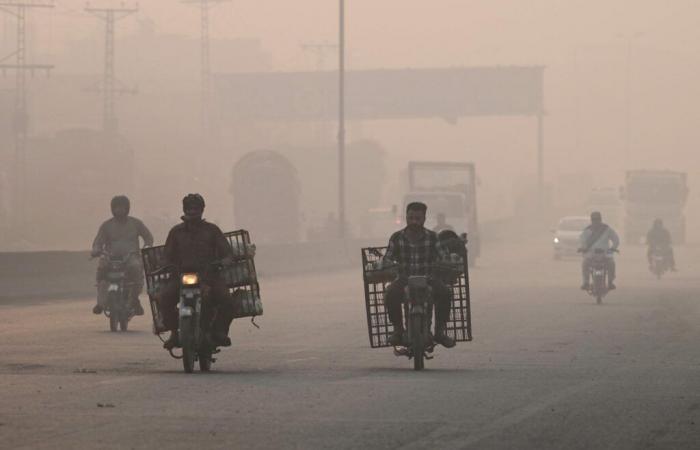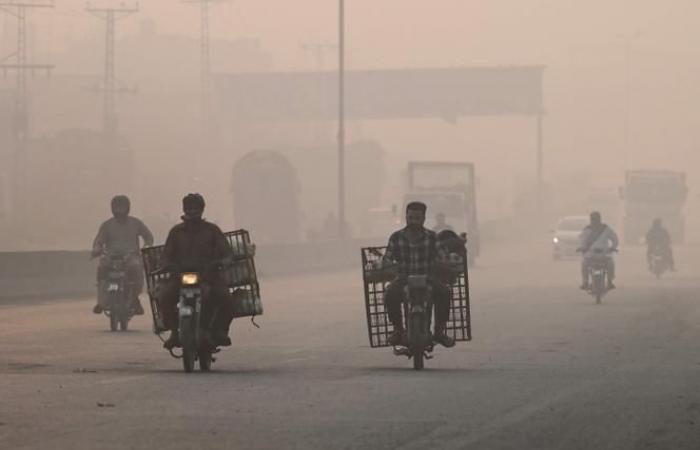This is a threshold more than 80 times higher than that considered acceptable by the World Health Organization (WHO). Air pollution in Lahore, Pakistan's second city, reached a historic level on Saturday, November 2, a government official told Agence France-Presse.
The WHO air quality index for fine particulate matter, PM2.5, peaked at 1,067 micrograms per cubic meter (µg/m3), before falling back to around 300 µg/m3 in the morning. However, air is considered to be ” bad “ from 180 µg/m3according to the WHO index, and ” dangerous “ beyond 300. “We never reached a level of 1,000” in Lahore, Jahangir Anwar, a senior environmental protection official in the local government, told Agence France-Presse.
This week, the air quality index “stayed under 200” in the city of 14 million inhabitants. Already, the concentration of PM2.5 was already almost twenty times higher than the level considered acceptable by the WHO, he continued. On Saturday, they reached 80 times this level.
For days, Lahore has, like every year, been caught in smog, a mixture of fog and polluting emissions caused by low-end diesel fumes, fumes from seasonal agricultural burning and winter cold. “The air quality index will remain high for the next three to four days”added Mr. Anwar.
Read also | Article reserved for our subscribers In Pakistan, forced marriages on the rise in families made vulnerable by climate change
Read later
Plea for “smog diplomacy”
On Wednesday, the provincial environmental protection agency announced new restrictions in four “hot spots” of the city – after having already canceled all outdoor sporting activities in schools for three months.
Tuk-tuks equipped with more polluting two-stroke engines are prohibited, as are restaurants that have barbecues without filters. Administrations and private companies will have half of their staff working from home from Monday. Construction work is halted and street food vendors, who often cook over open fires, must close at 8 p.m.
In addition, Pakistani authorities say they will have to deal with a wind coming from neighboring India on Saturday, which is also regularly caught in smog at the end of the year. NASA satellite images show numerous fires on both sides of the border where farmers are carrying out agricultural burning this season.
“The level [de pollution] is due to the easterly wind corridor coming from India towards Lahore »said Mr. Anwar, who pleads for a “diplomacy du smog”. Smog is particularly severe in winter, when cold, denser air traps emissions from poor-quality fuels used to power the city's vehicles and factories at ground level.
Newsletter
“Human warmth”
How to face the climate challenge? Every week, our best articles on the subject
Register
According to the WHO, prolonged exposure to smog can cause strokes, heart disease, lung cancer and respiratory diseases. The Punjab government has appealed to the people, especially “those suffering from respiratory, pulmonary and heart diseases, the elderly” has “not leave their homes”. If they go out, they must “must wear masks”.
Read also | Article reserved for our subscribers From London to Delhi, how smog migrated east
Read later







